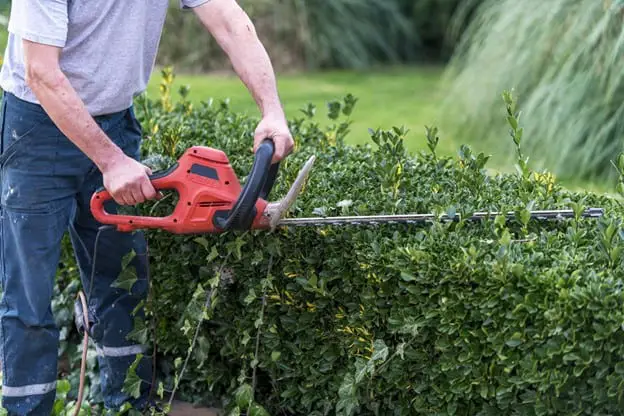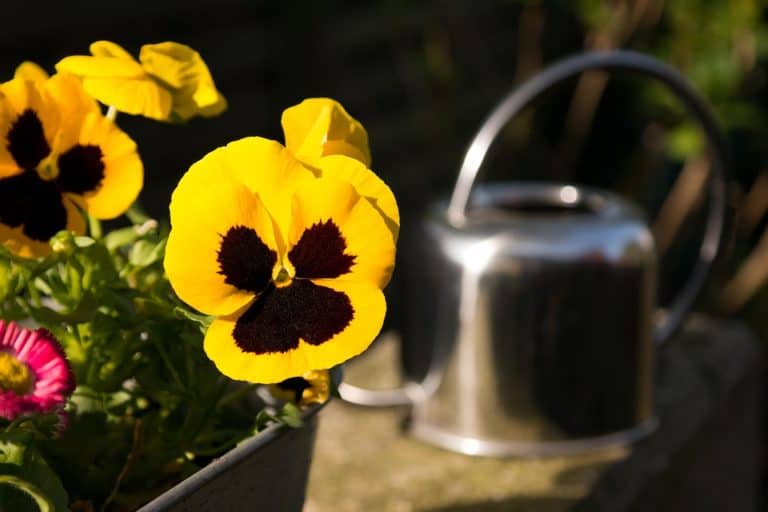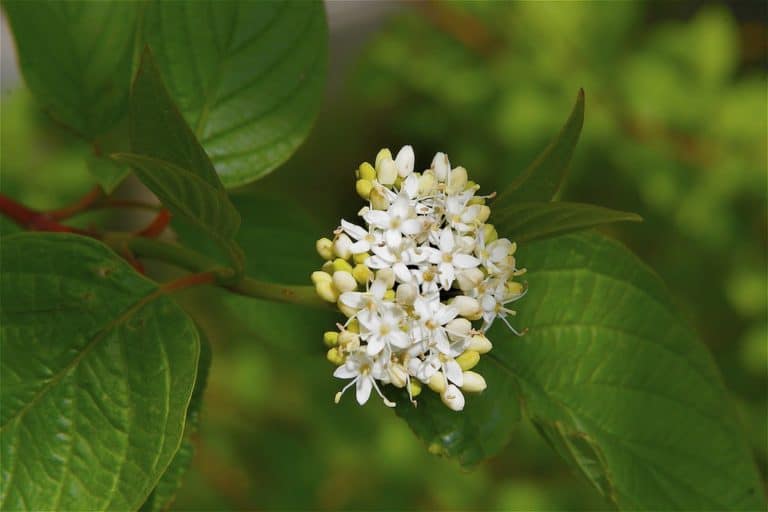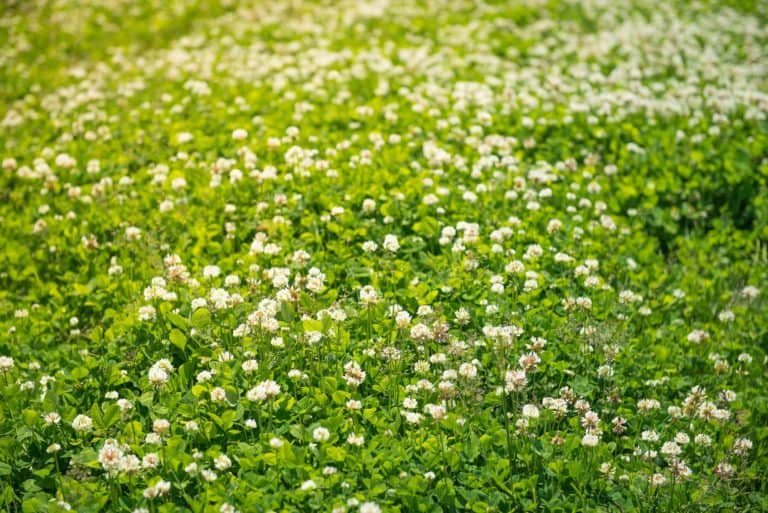Sunflower Leaves: Identifying Sunflower Leaf Problems
Sunflowers are the perfect summer flowers to have in your home and garden to brighten up your days! They are perfect for kids to grow and seeing them in full bloom is a great reward as they grow very tall and strong.
Although growing sunflowers is a rewarding and joyful experience, there can be a few problems that you will need to look out for.

The leaves of your sunflower will tell you exactly what is wrong with your plants. It is important to pay attention to the sunflower leaves as you will be able to identify the problem and fix it so that your sunflowers can continue to grow into beautiful flowers.
Finding the cause of the problem with your sunflower means that you can take care of it quickly, so making sure that you know the signs will help to get your sunflower back on track.
If you are unsure about what you need to look out for on the sunflower leaves, you can find out below. This guide will help you to identify the problems with your sunflowers based solely on the appearance of their leaves.
Contents
How Should Sunflower Leaves Look?
The leaves of a sunflower are quite distinctive in shape as they can either have a pointy tip or a heart-shaped tip.
As the sunflower begins to grow taller, the leaves become bigger, so you won’t get a tall sunflower with small leaves. The leaves grow to match the size of the fully grown sunflower.
The leaves of your sunflowers should be dark green but they may appear lighter depending on the sunflower. Green leaves show that the sunflower is healthy, so paying close attention to the leaves can help you identify the problems that your sunflower is having.
Understanding Unusual Sunflower Leaves

If you are concerned that you don’t know what to look out for with your sunflower leaves, below we have explained the appearance of the leaves so that you can make sure that your sunflower is healthy.
This will help you to identify the problems that your sunflower is having and treat them correctly.
Curling
The leaves of your sunflower should be smooth, but if you begin to notice that the leaves are curling, this is a sign that your sunflower may be infected with Verticillium.
Verticillium is a fungal infection that the sunflower can contract from the soil and causes the plant to rot.
Although you cannot usually cure the plant of verticillium once it has entered the plant, you can remove small parts that are infected.
You can also attempt to get rid of the fungus by solarization, where you heat up the top of the soil in an attempt to kill the verticillium.
Yellow
As the leaves should be green, you should be able to quickly identify any color changes in the leaves. When the leaves become yellow, this shows that your plant is having difficulty draining and is overwatered.
Although a healthy sunflower has green leaves, you are able to cure your plant and get it back to being healthy from overwatering.
If your plant is overwatered, you must stop watering it until it is properly drained. If your pot doesn’t have good draining holes, make sure you move the sunflower to a pot that does.
The soil needs to dry out but move the plant to the shade to recover before moving it back into the sunlight.
Crispy/ Brown
If the leaves of your sunflower begin to turn brown and crispy, this is a sign that your plant is severely dehydrated.
If your plant isn’t getting enough water, it will begin to dry up and it won’t be able to grow properly, so it is important that you take the right steps in ensuring that your sunflower gets the correct amount of water to live.
Although you may feel like this is the end for your sunflower, you will be able to bring it back to life with good watering.
Begin by watering your sunflower until the soil becomes damp. If the soil becomes too soggy, the roots will rot, so make sure that it is only damp.
You can also place the pot in shallow water for a maximum of 10 minutes, but no longer as you don’t want the roots to become damaged.
Drooping
Drooping sunflower leaves can indicate that the plant has either too much or not enough water, which makes it difficult to identify the exact problem.
It is recommended that you keep track of your watering with a journal, otherwise, you will be able to tell by feeling the soil in the pot. Too soggy and the plant is overwatered, and too dry and the plant is dehydrated.
If the plant has been watered too much, you need to let the soil dry before beginning to water it again. If the soil is too dry, water the plant until the soil is damp. After doing this, you should see that the leaves will begin to appear straighter and less droopy.
Lack Of Leaves
You may begin to notice that the leaves of your sunflower are becoming more sparse and are unsure what the problem is. In this case, animals could be eating your sunflowers and making the leaves disappear.
Although you may think that this is destroying the sunflower, new shoots will begin to appear where the other leaves used to be.
To protect your sunflowers from being eaten, you can use protective covers over your sunflowers to prevent animals from getting in to eat them.
You can also set up designated spots for animals such as bird feeders or extra plants or vegetables for them to feed on. This will help to draw attention away from your sunflowers.
Holes
Holes appearing in your sunflower leaves are a sign that there are insects eating the leaves of your sunflower.
Make sure that you check to see if there are any caterpillars or bugs on the leaves as this can be detrimental to the health of your sunflower.
As caterpillars can be dangerous or have a prickly coat, make sure that you are wearing gloves.
You are able to handpick the caterpillars from the leaves if they are visible and you can see exactly what you are dealing with. Wearing gloves is important as you need to protect yourself from any injuries.
As caterpillars and insects tend to feed off other plants, you can wait and see if they move on from your sunflowers. If they don’t, try removing them by hand.
Can You Eat Sunflower Leaves?

There are different recipes online that suggest that you can add sunflower leaves to salads or dishes, but you must be mindful of the condition that the leaves are in.
If the leaves are yellow, brown, drooping, or infected, you should avoid consuming them as they could cause you harm.
Sunflower leaves are vital in keeping the sunflower healthy as they store energy to help keep the sunflower alive. This means that you should avoid picking fresh leaves off the sunflower as you will be affecting its energy source.
It isn’t a good idea to pick the leaves of the sunflower as you want to make sure that it has enough energy and sunlight storage to survive.
Therefore, it isn’t recommended that you pick the leaves of your sunflower as you don’t want to affect their growth. Reducing the amount of sunlight storage that the plant has could reduce the lifespan of your sunflower.
How To Grow A Healthy Sunflower
Making sure that your sunflower is strong and healthy is extremely important in making sure that your sunflower lives to its full potential.
It is important to make sure that your sunflower remains healthy and that you look out for any small changes in the leaves that could be showing that there is a problem with your sunflower.
Growing Outdoors
As sunflowers do not grow well in frost or colder climates, it is best to wait until a warmer time of the year before starting to grow your sunflowers outdoors.
As you will be growing them outside, you will need to be mindful of insects like snails and slugs that will be attracted to the leaves.
If you are shielding your sunflower from insects, make sure that there is enough room for the plant to continue growing.
Organza bags can be placed on the head of the sunflower and on the leaves to protect them, but make sure that there is enough room inside for them to grow and not be too confined.
Growing Indoors
When you begin growing a sunflower indoors, it will grow taller and quicker as it is warmer inside your home than in your backyard.
Sunflowers thrive in warm climates, so if you want to see quick growth, starting to grow your sunflower indoors will help it to thrive. Usually, the sunflower will begin to grow within a week of planting.
Using a wooden pole to keep the sunflower upright will help to strengthen the stem and keep the sunflower vertical until it is strong enough to hold itself.
If you want to start introducing your sunflower outdoors, you can do this by leaving it outside for a day and bringing it back in at night.
This will help gradually introduce it to colder temperatures and protect the sunflower leaves from being eaten or destroyed.
How To Keep The Sunflower Healthy

To ensure that your sunflower is kept healthy, make sure that the sunflower is positioned in the sun.
It is advised that your sunflower has lots of exposure to sunlight to make sure that the leaves are green and able to store energy for the plant to live.
Regularly watering the sunflower will help to keep it moist but you need to make sure that it isn’t overwatered. Make sure that the soil is moist and not soaking wet as you don’t want to damage the roots or affect the growth of the leaves.
Final Thoughts
To conclude, it is extremely important to pay close attention to the leaves of your sunflower as they can help you to identify different problems that may be affecting your plant.
By looking at the leaves, you will be able to tell if the plant is dehydrated, infected, overwatered, or becoming destroyed by insects or animals.
By knowing the signs of each of these common problems, you will be able to cure your sunflower of these issues.
It is important to make sure that the leaves are kept healthy as they store energy inside of them to keep the sunflower alive.
By making sure that the leaves of your sunflower are green and healthy, you will be able to minimize the risk of your sunflower not growing properly.
It is important to care for your sunflower and to know the signs of an unhealthy plant so that you can sort the problem out quickly and efficiently.





